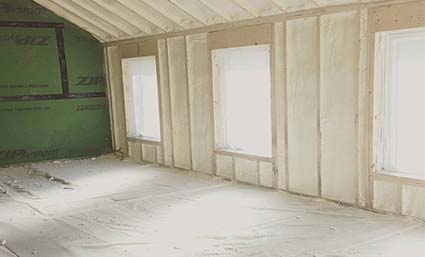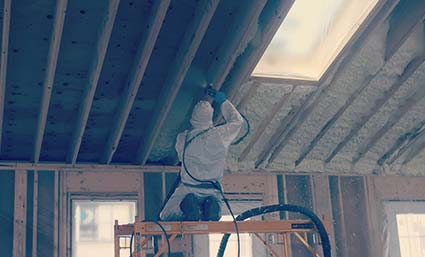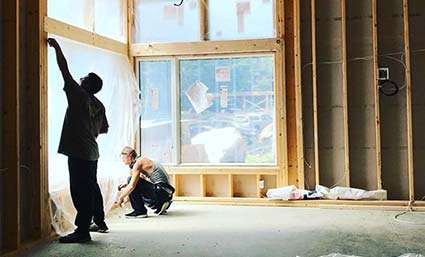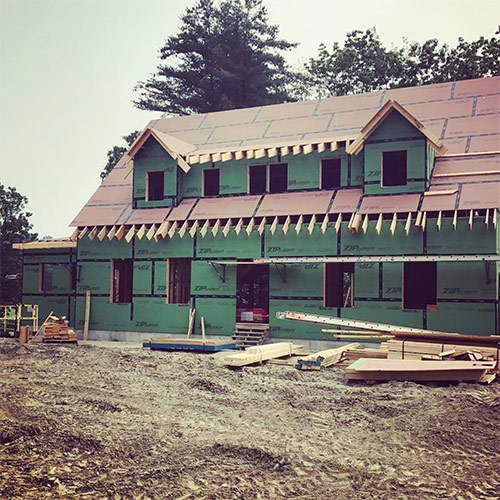Living in Southern Maine brings its own set of challenges, with mold growth being a common concern for homeowners. Mold not only poses health risks, but also damages property and affects indoor air quality.
When it comes to insulation options, there has been speculation about whether spray foam insulation contributes to mold problems. In this post, we’ll dive deep into the topic, separate fact from fiction, and explore whether spray foam insulation is a villain or a hero in battling against mold.
Understanding Mold Growth and its Implications
Before addressing the issue of spray foam insulation, it’s crucial to understand mold growth and its implications. Mold, a type of fungi, thrives in warm, damp, and humid environments. It spreads through microscopic spores and, when indoors, can cause allergies, respiratory issues, and structural damage
Common causes of mold growth include high humidity, water leaks, condensation, and poor ventilation. Moisture provides the ideal breeding ground for mold. Now, let’s examine the characteristics of spray foam insulation and its potential impact on mold growth.
What is Spray Foam Insulation?
Spray foam insulation, a popular choice among homeowners, boasts superior insulating properties. This two-component mixture expands when applied, creating an airtight seal. The two main types of spray foam insulation are open-cell and closed-cell.
Open-cell spray foam insulation, known for its soundproofing qualities, has a lower density. On the other hand, closed-cell spray foam insulation, known for its rigidity and strength, has a higher density. Both types offer excellent thermal insulation and air sealing capabilities, making them effective go-to solutions for energy efficiency.
Addressing Concerns: Does Spray Foam Insulation Cause Mold?
A common misconception suggests that spray foam insulation causes mold growth. However, it’s important to clarify that it doesn’t. The culprits are moisture and humidity levels within the home. If not managed properly, mold can grow regardless of the type of insulation used.
Spray foam insulation can actually hinder mold growth when installed correctly. Its airtight seal acts as a barrier against moisture infiltration, reducing the risk of mold development. Moreover, it helps maintain consistent indoor temperatures, minimizing condensation and excess humidity, which are conditions conducive to mold growth.
The Advantages of Spray Foam Insulation in Preventing Mold
In the battle against mold, insulation plays a critical role. Among insulation options, spray foam stands out for its superior performance and multifaceted benefits.
- Air-tight seal: Spray foam insulation provides an effective barrier against moisture infiltration, reducing the risk of mold growth.
- Improved indoor air quality: By sealing air leaks, spray foam insulation helps reduce the entry of allergens and pollutants into the home, improving indoor air quality.
- Enhanced energy efficiency: Spray foam insulation reduces heat and cold transfer, resulting in lower humidity levels and reduced condensation, creating an inhospitable environment for mold growth.
- Durable and long-lasting: Known for its longevity, spray foam insulation provides ongoing mold prevention benefits for years.
Opting for Mold-Resistant Spray Foam Insulation
When choosing spray foam insulation for your home, opt for a product that’s specifically designed to resist mold. Look for spray foam insulation that’s been tested and certified for its resistance to mold growth. These formulations incorporate additives that inhibit mold, ensuring long-term protection against mold-related issues.
Maintaining a Mold-Free Environment with Spray Foam Insulation
While spray foam insulation excels in mold prevention, it’s crucial to follow proper maintenance and preventive measures to maintain a mold-free environment. Here are some tips:
- Regular inspection: Inspect your home for any signs of moisture intrusion or leaks. Address these issues promptly to prevent mold growth.
- Proper ventilation: Ensure adequate ventilation, especially in moisture-prone areas like bathrooms, kitchens, and basements.
- Control humidity levels: Use dehumidifiers, exhaust fans, and air conditioners to control humidity levels and minimize moisture buildup.
- Address water leaks: Swiftly repair any water leaks, whether from plumbing, roofing, or windows.
By following these guidelines and maintaining a clean and dry environment, you maximize the benefits of spray foam insulation in preventing mold growth.
Spray foam insulation is a reliable and effective solution for energy efficiency and mold prevention. Contrary to the misconceptions, it doesn’t cause mold. Instead, it’s the moisture and inadequate moisture control measures that contribute to mold problems. When installed correctly and paired with proper maintenance practices, spray foam insulation emerges as a champion in creating a mold-free environment in your Southern Maine home.
Investing in certified mold-resistant spray foam insulation is a proactive step toward a mold-free and energy-efficient home. Choose wisely, implement regular inspections, and follow preventive measures to maintain a healthy living space.
If you’re ready to learn whether your Maine home is ready for spray foam insulation, get a free quote from Seal It Insulation Systems today!











